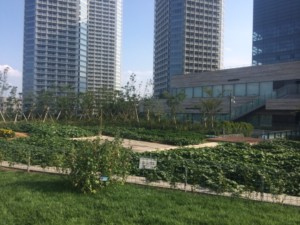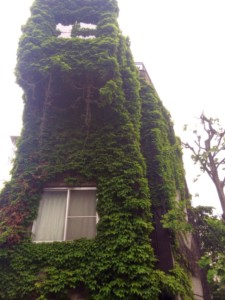Tokyo is mostly covered in concrete, and therefore, the city is prone to the urban island heat effect, especially during the summer.
An urban heat island (or UHI) is an urban or industrial area that is a few degrees warmer than areas that surround it. The heat is partly due to waste heat that is produced from vehicles, factories, and electric appliances, along with strong rays of the summer sun. The heat cannot be absorbed nor cooled due to the infinite amount of concrete buildings and unending roads. Thus, it stays within the atmosphere above cities.
This phenomenon does not only impact the natural environment, but it also affects our health. Every year thousands of people get nauseous due to the excessive heat.
As a countermeasure against the urban heat island effect, greenery, such as rooftop gardens and green curtains were introduced, and soon gained popularity around the country. Not only do these contribute to reducing the impacts of the urban heat island effect, they also keep electricity costs to a minimum. If you grow a green curtain across your balcony, a large window, or along your house wall, or make a garden on your roof, the air in your house will cool down by 2-3 degrees. The greenery will provide a shade for your house and will also absorb the heat while letting out oxygen. Thus, there will be no need to air condition the house as much. The leaves will also protect house walls from acid rain!
Increased greenery in the city will lead to a more sustainable evironment for all living things and future generations to live in.



Get Social